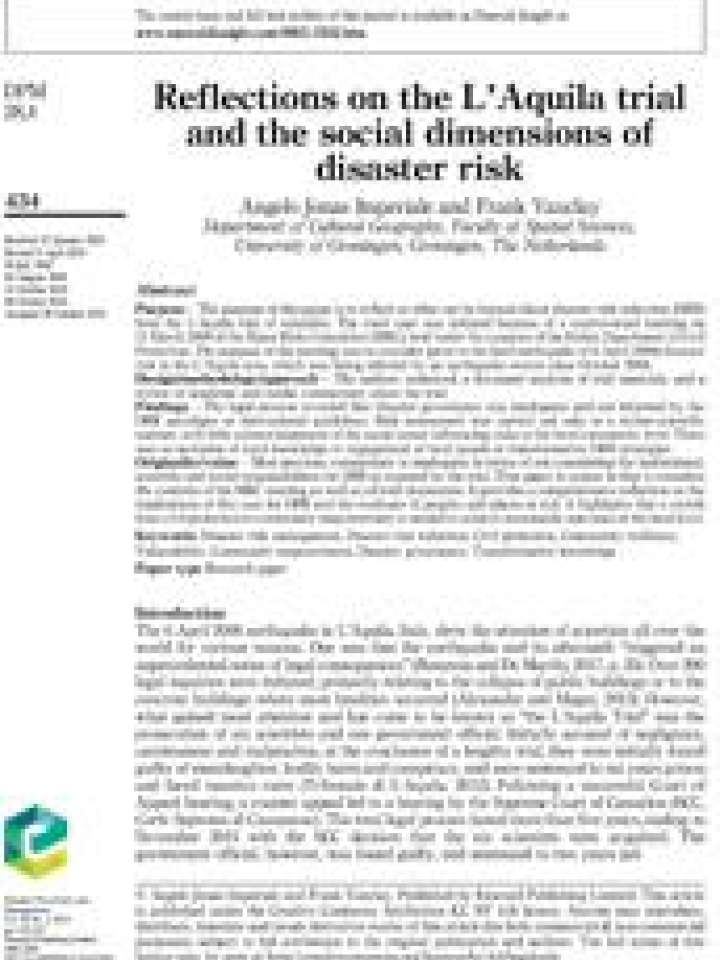Reflections on the L’Aquila trial and the social dimensions of disaster risk
The purpose of this paper is to reflect on what can be learned about disaster risk reduction (DRR) from the L’Aquila trial of scientists. The court case was initiated because of a controversial meeting on 31 March 2009 of the Major Risks Committee (MRC), held under the auspices of the Italian Department of Civil Protection. The purpose of the meeting was to consider (prior to the fatal earthquake of 6 April 2009) disaster risk in the L’Aquila area, which was being affected by an earthquake swarm since October 2008. The authors undertook a document analysis of trial materials, and a review of academic and media commentary about the trial.
The legal process revealed that disaster governance was inadequate and not informed by the DRR paradigm or international guidelines. Risk assessment was carried out only in a techno-scientific manner, with little acknowledgement of the social issues influencing risks at the local community level. There was no inclusion of local knowledge or engagement of local people in transformative DRR strategies.
Most previous commentary is inadequate in terms of not considering the institutional, scientific and social responsibilities for DRR as exposed by the trial. This paper is unique in that it considers the contents of the MRC meeting as well as all trial documents. It provides a comprehensive reflection on the implications of this case for DRR and the resilience of people and places at risk. The report also highlights that a switch from civil protection to community empowerment is needed to achieve sustainable outcomes at the local level.
Explore further
